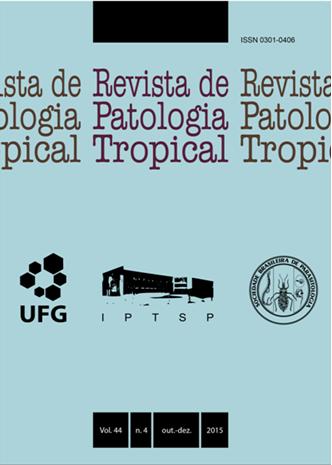NON-Aspergillus FUNGAL RHINOSINUSITIS AT A TERTIARY CARE HOSPITAL AND THE FIRST REPORT OF HUMAN INFECTION BY Trichoderma asperellum
DOI:
https://doi.org/10.5216/rpt.v44i4.39232Keywords:
Sinus, sinusitis, non-Aspergillus rhinosinusitis, Trichoderma asperellum.Abstract
We describe 27 cases of fungal rhinosinusitis, which were caused by agents other than Aspergillus, diagnosed at our institution during a 24-year period. Particular focus was on defining the causal fungi and the predisposing factors. Fungal cultures were obtained from 20 cases and there was no growth in seven cases. Classification of mycotic disease of the nose and paranasal sinuses as invasive and noninvasive is based on clinical, radiological, and histopathological factors. The most common pathogens were Histoplasma capsulatum (n=4), Scedosporium apiospermum (n=2), Alternaria alternata (n=2), Schizophyllum commune (n=2), Pseudallescheria boydii (n=1), Penicillium sp. (n=1), Lichtheimia (Absidia) corymbifera (n=1), Xylaria enteroleuca (n=1), Trichoderma asperellum (n=1), T. harzianum (n=1), T. viride (n=1), Fusarium solani (n=1), Cladosporium sp. (n=1), and Cryptococcus neoformans (n=1). From the ones that revealed no growth, four were classified as hyalohyphomycosis and three were mucormycosis by the histopathological findings. In addition, we describe the first welldocumented case of rhinosinusitis and human infection by T. asperellum.Downloads
Downloads
Published
How to Cite
Issue
Section
License
The manuscript submission must be accompanied by a letter signed by all authors stating the full name and email address, confirming that the material has not been published or is under consideration for publication elsewhere, and agreeing to transfer copyright in all media and formats for Journal of Tropical Pathology. The authors will not be paid for published articles. They are solely responsible for the content of those articles, even if the Editor holds the right to adjust them to the norms of the journal.
The reviewers will not be paid for the peer review process.

